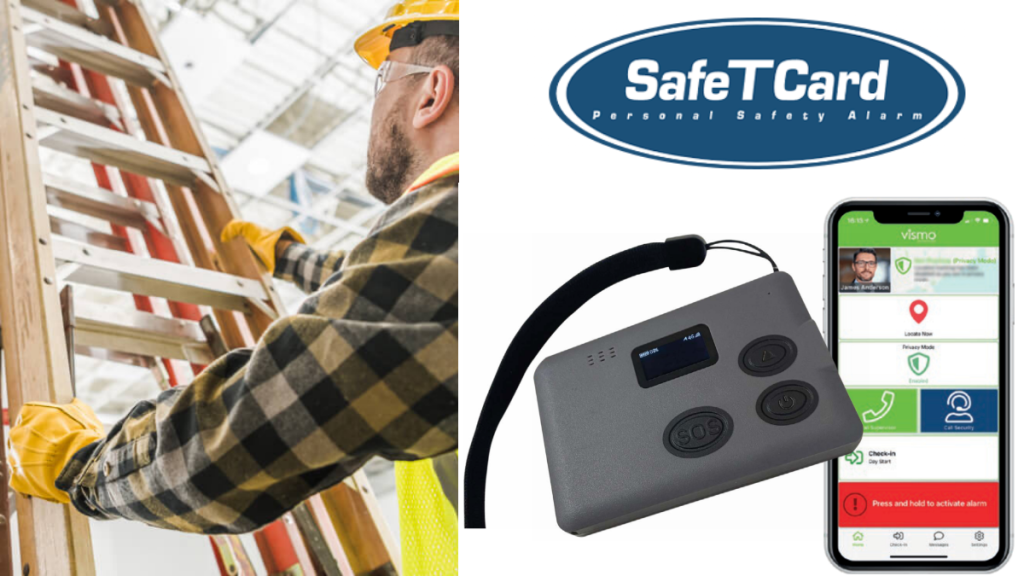Introduction
In today’s world, ensuring the safety and well-being of employees is a top priority for organisations. Unfortunately, certain workers are more vulnerable to potential attacks or threats in their line of work. Whether it’s late-night shifts or high-risk industries where workers have to deal with members of the public face-to-face, these individuals deserve the right tools to protect themselves. One such tool gaining prominence is the personal safety alarm. In this article, we will explore how personal safety alarms can be used by workers at risk of attack in the workplace, providing peace of mind and an added layer of security.
Understanding Personal Safety Alarms
Simple personal safety alarms are compact, easy-to-use devices designed to emit a loud, attention-grabbing sound when activated. They are typically small enough to be carried discreetly, such as on a keychain or in a pocket. These alarms serve as a deterrent, alerting others nearby and potentially discouraging an attacker from continuing their actions. While personal safety alarms are not intended to replace security protocols or procedures, they can significantly enhance the safety measures already in place.
Creating a Safer Work Environment
a. Quick Response:
In potentially dangerous situations, time is of the essence. Personal safety alarms provide workers with an instant means of attracting attention, ensuring that help arrives promptly. This rapid response can make a significant difference in diffusing a threatening situation before it escalates.
b. Deterrence:
The loud, piercing sound emitted by personal safety alarms acts as a powerful deterrent. It draws attention to the situation, causing potential attackers to think twice before proceeding with their harmful intentions. The element of surprise can be instrumental in deterring or delaying an assault, giving the worker a chance to escape or seek assistance.
c. Empowering Employees:
Equipping workers with personal safety alarms sends a clear message that their safety is a priority. Knowing they have a device to help them in times of distress can boost employees’ confidence and overall sense of security, leading to increased productivity and job satisfaction.
Applicable Work Environments
a. Night Shift Workers:
Employees who work during late hours, such as security guards, nurses, or delivery personnel, often face increased risks due to reduced visibility and fewer people around. Personal safety alarms offer a valuable tool for these workers, providing them with a way to quickly summon help and potentially ward off assailants.
b. Remote or Isolated Locations:
Workers in remote or isolated areas, such as construction sites, agricultural fields, or oil rigs, may encounter situations where immediate assistance is not readily available. Personal safety alarms serve as a lifeline in such scenarios, allowing workers to alert colleagues or nearby authorities about potential threats.
c. High-Risk Industries:
Certain professions, such as healthcare workers dealing with patients prone to aggression, social workers, or law enforcement personnel, inherently involve a higher risk of assault. Personal safety alarms become an integral part of the overall safety measures in place, enabling workers to take proactive steps towards protecting themselves.
Implementing Personal Safety Alarms Effectively
a. Training and Education:
Providing comprehensive training and education on the proper use of personal safety alarms is crucial. Employees should be familiar with how to activate the alarm, maintain it, and respond appropriately in threatening situations. Regular practice drills can reinforce these skills and boost employees’ confidence in utilising the alarms effectively.
b. Integration with Security Systems:
Personal safety alarms can be integrated with existing security systems to enhance their effectiveness. For example, connecting the alarms to security cameras or access control systems can trigger an immediate response from security personnel or law enforcement.
c. Reporting Mechanisms:
Alongside personal safety alarms, organisations should establish clear reporting mechanisms for workers to document incidents or potential threats. Encouraging open communication and providing a supportive environment allows workers to report concerns and facilitates the implementation of preventative measures.
Limitations and Suitabililty
We should make it quite clear, of course, that straightforward personal safety alarms do have some limitations. Whilst they may be perfect for attracting attention and deterring those who are be threatening or could be about to attack an employee, they are not ideal for all types of workers who are at risk whilst carrying out their jobs.
For example, workers in remote or isolated locations working on their own. These type of workers require a more sophisticated form of device, such as a specialist lone worker alarm, that can summon assistance from a call centre in the event of an accident or assault occuring. These kind of devices offer a step above the type of functionality seen in a standard personal alarm, having features such as direct communication with a call centre, two way audio, GPS tracking and a smart ‘man down’ feature to call for help in the event of an accident occuring.
Conclusion
If we include all kinds of devices within the term ‘personal safety alarms’, then we can certainly say that they offer a practical and accessible solution for those workers at risk of attack or accident in the workplace. By empowering employees, enhancing response times, and acting as a deterrent, these alarms contribute to creating a safer working environment. Organisations must prioritise the implementation of personal safety alarms, provide thorough training, and integrate them effectively into existing security systems. By doing so, we can make significant strides towards safeguarding the well-being of workers and fostering a culture of security in the workplace.

